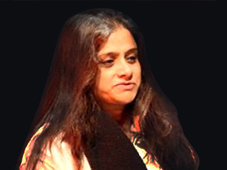None of the solutions in the market fit our needs, or even addressed our constraints. All existing solutions were either expensive, bulky, power hungry, required connectivity, or available as separate, unconnected solutions. We realized that Ladakh needed a truly customized solution that would not pre-suppose existence of any infrastructure, and work even in the most challenging of situations.
We called our solution the “DigiLab”
The Solution –
The DigiLab is a Solar Powered customized, personalized and adaptive Digital Learning Solution for use in remote off-the-grid schools without even electricity or mobile connectivity, built as locally networked systems in schools and connected to a Cloud with last mile connectivity provided through a mobile “Connector App”.
Within the school, The DigiLab is designed to be a Teacher’s Aid to support in the teaching process and also a learning space for children where they learn at their own pace in a personalized digital learning platform. To facilitate this, each school is provided a 200 W Solar Panel and Gel Battery, a local Networking and Data Analytics Server (Raspberry Pi/Other), multiple 10” Lenovo Android Tablets (or Android Laptops) and a 12 v LED T.V in a furnished lab. The Digital Content is fully personalized and customized to the J&K Board, enabling individual learning journeys for each child and with technology enabled Data Analytics stored in the server to drive real-time monitoring and actions.
Each in-School system is connected to a cloud via a last mile “Connector or Facilitator App” which is managed by travelling 17000ft Facilitators who travel periodically to schools, conduct workshops and training sessions and gather data to be synced to the cloud when in connectivity.
Customizations –
The Solar Solution, provided by our Solar Partners, Simpa Energy, was custom built to a 12v Solution to power up just the DigiLab (Tablets and 12v LED TV) and hence minimize chances of the system being taken for personal use in homes. The Gel Battery, the only battery available in India that can charge at -50 degrees, along with the entire charging unit is encased in a special customized box provided with foam insulation. The Personalized Digital Learning Platform, was built by our Ed Tech Partner Convegenius, who customized their existing online product the CG-Slate to make it a truly off-the-grid solution for Ladakh. The content was curated specifically for the Jammu and Kashmir board and also includes other non academic content like Art, General Knowledge, Nursery Rhymes etc. aimed at increasing exposure of children who otherwise remain isolated and do not have any access to the outside world.


